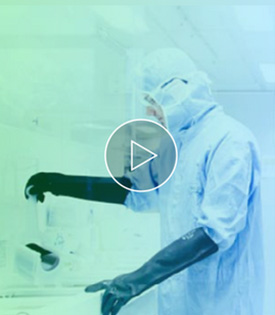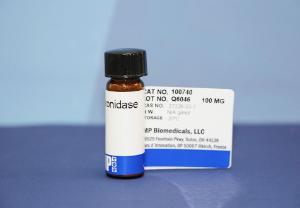Hyaluronidase is a glycoprotein containing 5% mannose and 2.17% glucosamine, it catalyzes the random hydrolysis of 1,4-linkages between 2-acetamido- 2-deoxy- b-D-glucose and D-glucose residues in hyaluronate
- Presentation: Tan Powder
- Gene ID: 281838
- Gene Symbol and Alisases: HYAL1, HYAL 2
- Uniport Number: Q8SQG8
- Extinction Coefficient (E1%): ~8 (Lit.)
- Optimum pH 4.5 - 6 (Lit.)
- Inhibitors: Fe2+ and Fe3+ are inhibitory as are Mn2+ and Cu2+, Sodium chloride acts as a stabilizer
- Dissolve 10 mg hyaluronic acid in 25 ml 0.1 M sodium phosphate buffer: pH 5.3 with 0.15 M sodium chloride
Testicular hyaluronidase hydrolyzes the endo-N-acetylhexosaminic bonds of hyaluronic acid and chondroitin sulfuric acids A and C (but not B), primarily to tetrasaccharide residues. Monosaccharides are not liberated. Hyaluronidase is often used in conjunction with collagenase to dissociate the extracellular matrix between cells of animal tissue, in order to release viable cells for use in tissue culture. It may also be used to clarify synovial fluids in order to make cell counts possible.
Hyaluronidase degrades hyaluronan and has been found to be inappropriately regulated during cancer progression. These enzymes randomly cleave β-N-acetylhexosamine-[1→4] glycosidic bonds in hyaluronic acid, chondroitin, and chondroitin sulfates.
Hyaluronidase from bovine testes is a tetramer consisting of 4 equal subunits with a molecular mass of 14 kDa each.


